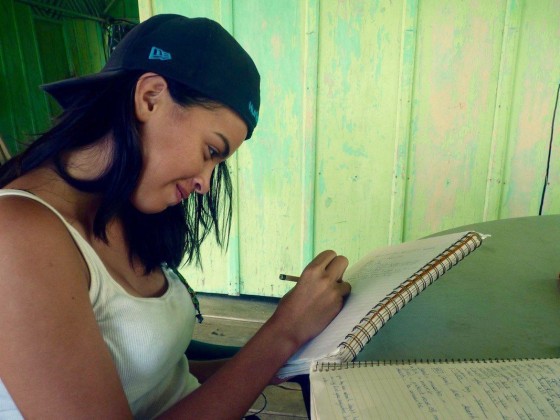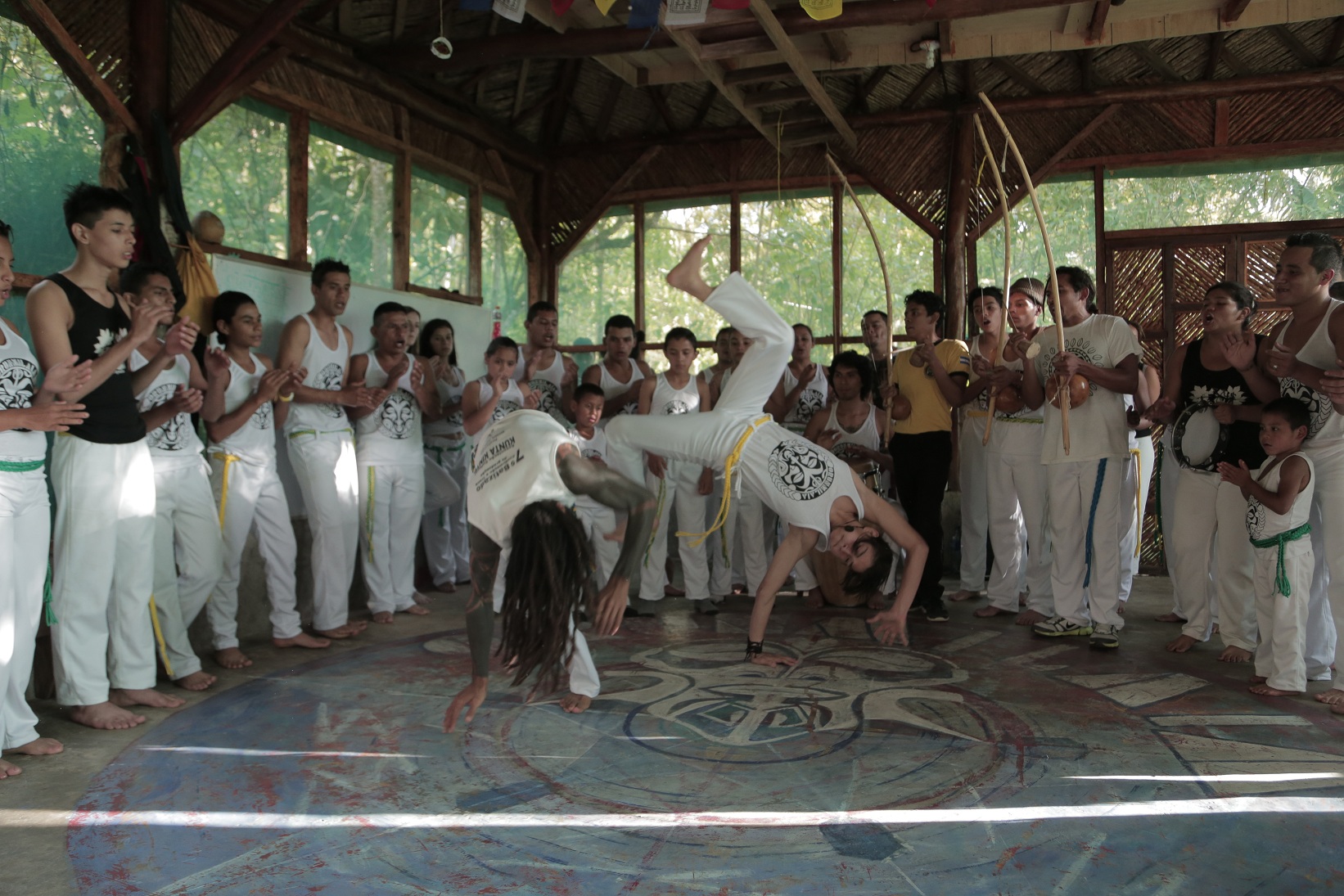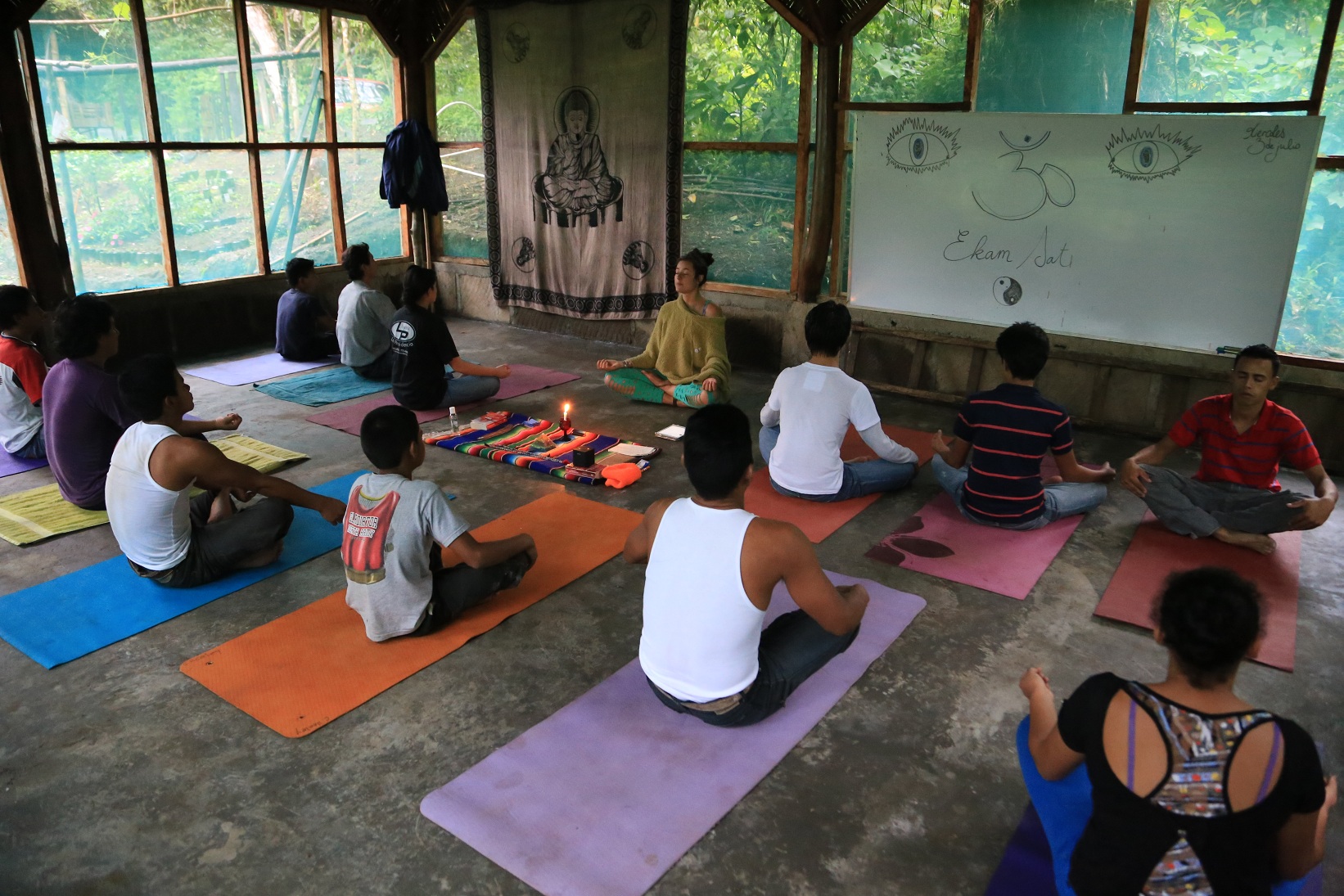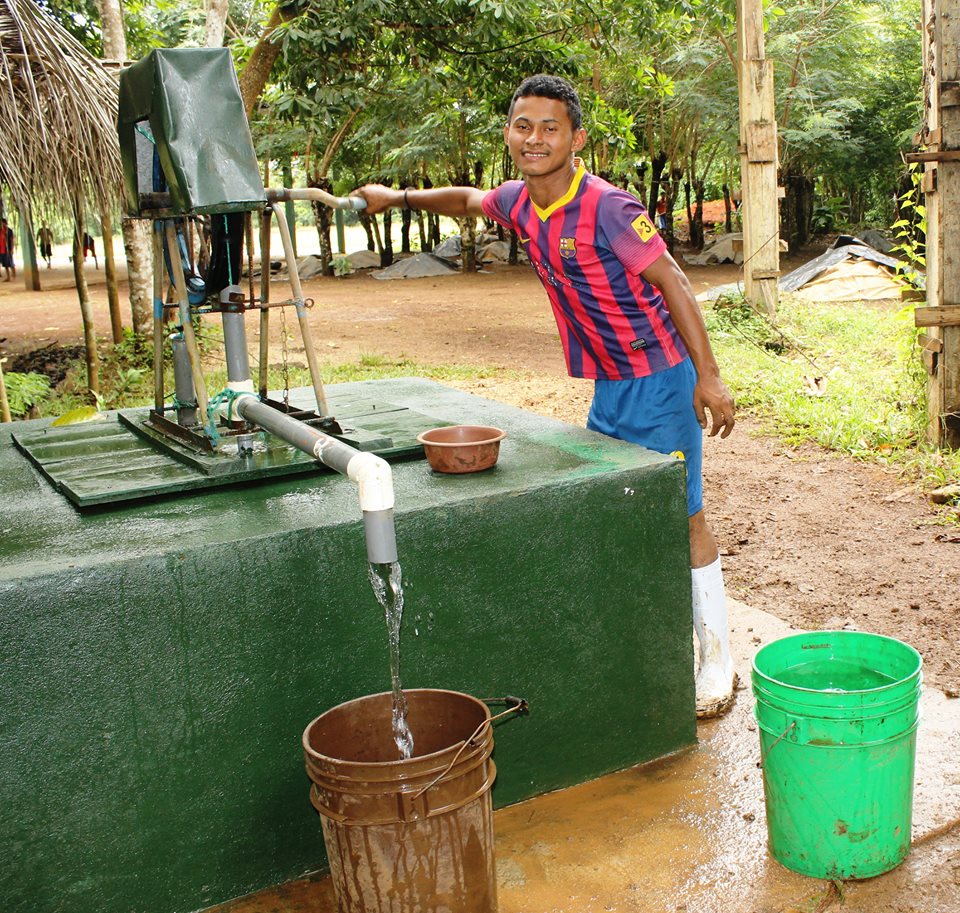1. CREA (Bosawás Cloud Forest, Jinotega)
The Bosawás biosphere reserve is the second largest rainforest in the Western hemisphere after the Amazon. It’s also home to some of the only indigenous populations left in Nicaragua.
Within this reserve, the CREA center (Culture-Resilience-Education-Arts) believes in developing environmental consciousness through education and art. They built a community cultural center from scratch using local and renewable materials, and now offer free workshops in music, art, capoeira, permaculture and yoga. Workshops are run by “resident teachers” that volunteer and commit to a minimal amount of time. The members of the center, also known as ‘fellows’, are mostly local youth who work predominantly in agricultural activities, seasonal coffee harvesting, community-tourism, reforestation, water protection and conservation projects.



